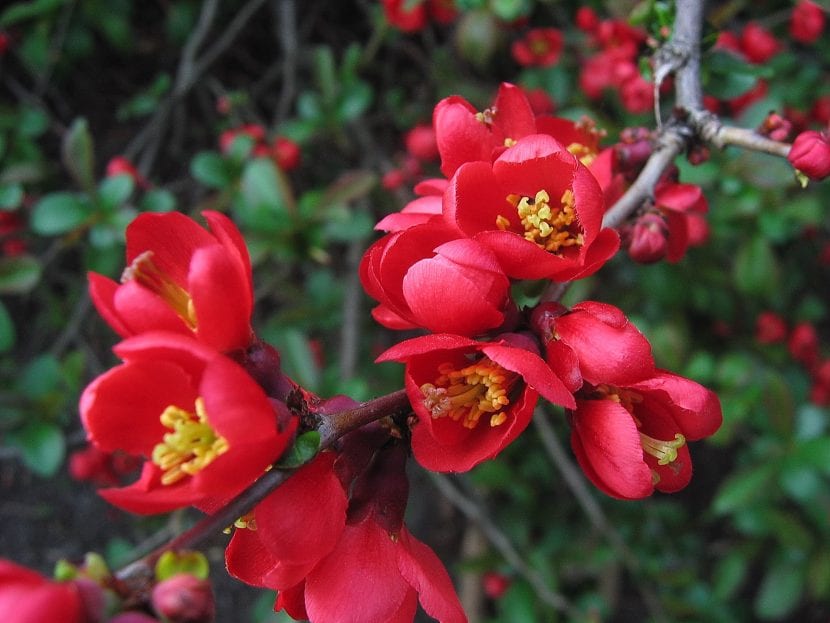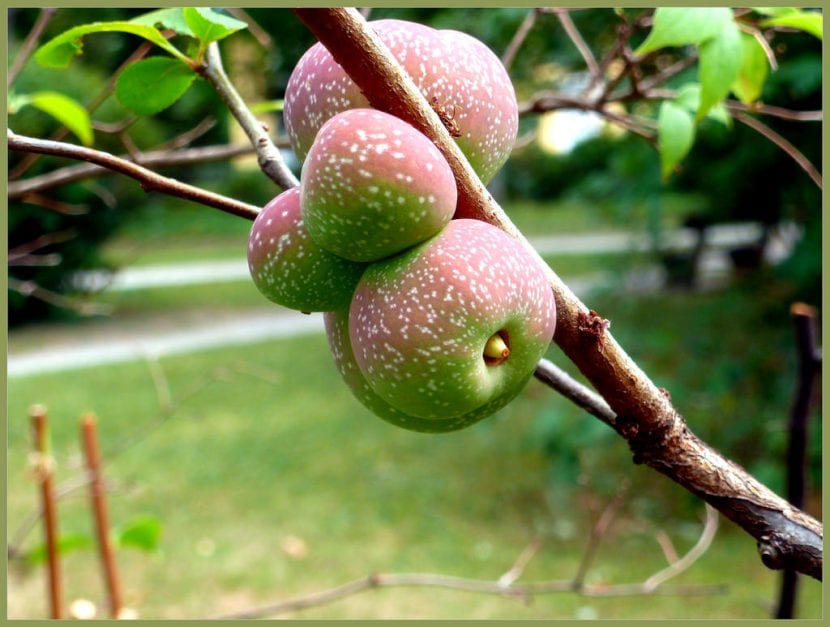
El Quince from Japan It is a beautiful deciduous shrub that, with its no more than three meters high, it can be had both in pot and in the garden. When it blooms, something it does at the end of winter, it becomes quite a spectacle, as its petals almost completely cover the branches.
Its maintenance and care are very simple, suitable for beginners, so surely that you will not have any problem with him and less after reading our article 🙂.
Origin and characteristics of the Japanese Quince
Our protagonist it is a deciduous and thorny shrub 1-3 meters high native to East Asia. Its scientific name is Chaenomeles japonica and it is characterized by having oval leaves of a bright green color of about 3-4cm in length, slightly leathery. Its flowers are small, about 2cm in diameter, of an intense red color. And the fruit has a diameter of 4cm, and it is very similar to the apple.
It has a rather slow growth rate, which is why its development can be easily controlled by pruning carried out in autumn. However, we have to know that if we can, it is possible that its flowering is not so abundant.
What are the care you need?

If you want to get a copy, here is a care guide:
- Location: outdoors, in full sun or in semi-shade.
- Irrigation: 3-4 times a week in summer, and somewhat less the rest of the year. It is important to use lime-free water.
- Soil or substrate: well drained, with a pH between 4 and 6 (acidic).
- Subscriber: it is advisable to fertilize the entire growing season with fertilizers for acid plants, following the indications specified on the packaging.
- Planting or transplanting time: in spring, when the risk of frost has passed.
- Multiplication: by seeds stratified in winter or by cuttings in spring.
- Pests: aphids and mites, which can be controlled by placing yellow sticky traps or with neem oil.
- Management: If it is watered in excess it can affect the powdery mildew fungus. To avoid this, water only when necessary and avoid wetting the leaves and flowers. In case you already have it, it should be treated with fungicides.
- Rusticity: withstands cold down to -10ºC.
Enjoy your plant 🙂.
I have seen bonsai of this fruit tree and they are spectacular with their red flowers.
The truth is that yes, they are very beautiful.